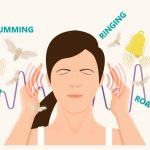Are You Familiar With The Term Passive Aggressive
Sometimes people act in ways that make us feel bad but it’s hard to put into words why. It could be passive-aggressive behavior. Passive-aggressive behavior can take many different forms, but some common examples include procrastination, deliberately doing things inefficiently, and making excuses.
The term “passive-aggressive” is often used to describe people who seem to avoid taking direct action, instead choosing subtle ways to express their displeasure or aggression.
There are a number of different theories about what causes people to behave in passive-aggressive ways, but one of the most commonly cited is that it’s a way of coping with conflict. When someone is faced with a situation that they don’t feel equipped to handle, they may engage in passive-aggressive behavior as a way of avoiding the conflict altogether.
Despite the fact that passive-aggressive behavior is often used as a way of avoidance, it can actually end up causing more problems than it solves. For one thing, it can be incredibly frustrating for the people who are on the receiving end of this type of behavior.
Also, passive-aggressive behavior can also damage relationships and make it difficult to trust or rely on the person who is behaving in this way.
What Causes Passive Aggression In People
There are many reasons that someone may exhibit passive-aggressive behavior. In some cases, it may be a learned behavior from childhood or adolescence. For example, children who are constantly berated or put down by authority figures may learn to express their frustration and anger in a passive-aggressive way. Alternatively, someone who grew up in an environment where assertiveness was not encouraged or rewarded may find it difficult to express himself or herself directly.
Passive-aggression may also be a way of coping with stress or anxiety, as it can be difficult to express emotions in a healthy way. In some cases, passive-aggressive behavior may be a symptom of underlying mental health issues, such as depression or borderline personality disorder.
There are many other reasons that someone may exhibit passive-aggressive behavior. For example, someone may act passive-aggressively in order to avoid confrontation or conflict. They may also do it as a way to get back at someone they feel has wronged them. Another reason could be that the person is simply trying to protect themselves from getting hurt emotionally.
Lastly, some people may resort to passive-aggression because it’s easier than communicating directly. If you are concerned about your own passive-aggressive behavior, or that of someone close to you, it is important to seek professional help.
A mental health professional can assess underlying causes and provide support. There are many alternative treatment options as well.
Red Flags Of Passive-Aggressive Behavior
The first step to addressing passive-aggressive behavior is to identify the red flags. Some common signs that someone may be passive aggressive include:
- Avoiding eye contact
- Sarcasm or snide remarks
- Intentionally doing things slowly
- Procrastination
- Blaming others
- Making excuses
- Withholding information or resources
- Being resistant to change
- Pouting or sulking
- Giving backhanded compliments
If you notice any of these signs in yourself or someone else, it is important to take action.
There are a few different ways you can react to passive-aggression – you can directly confront the person by asking them why they are behaving that way, but know that they will deny it. You can also try to ignore the behavior and focus on positive interactions. If the behavior is impacting your work or personal life, you may need to set boundaries with the person.
For example, you could tell them that you will no longer tolerate their passive-aggressive behavior and will walk away from any conversation or interaction that turns sour. If the behavior is severe or is impacting your mental health, you may need to seek professional help. A therapist can work with you to identify the root cause of the problem and develop a plan to address it.
Passive-aggressive behavior is often a result of unresolved conflict or feelings of powerlessness. When someone feels like they are unable to express themselves directly, they may resort to passive-aggression as a way to get their point across. Passive-aggressive behavior can also be a way of coping with stress or anxiety. A mental health professional can assess underlying causes and provide treatment options.
How To Respond To Passive-Aggression
It can be hard to deal with passive-aggressive people. They may seem nice on the surface, but their actions often speak louder than their words. If you’re constantly dealing with someone who is passive-aggressive, it’s important to know how to respond.
The first step is to try and understand what might be causing the behavior. It could be that the person is afraid of conflict, or they might have low self-esteem. Once you understand the root cause, it will be easier to deal with.
If you’re dealing with a passive-aggressive person at work, try to have a direct conversation about the issue. Be assertive, but avoid getting into an argument. It’s also important to set boundaries with this person. Let them know that their behavior is not acceptable, and that you won’t tolerate it.
In general, it’s best to avoid passive-aggressive people if possible. But if you can’t, remember to be assertive and set clear boundaries.
Warning Signs That You Might Be Passive-Aggressive
Do you find yourself getting frustrated with people or situations often? Do you have a hard time expressing how you feel? If so, you might be passive-aggressive.
Passive-aggressiveness is a form of indirect communication where you express your feelings in a way that is not direct. This can manifest in different ways, such as:
- Sarcasm
- Giving backhanded compliments
- Making snarky comments
- Procrastination
- Silent treatment
If you find yourself engaging in any of these behaviors, it might be time to start communicating in a more direct way. This doesn’t mean that you have to be confrontational, but it does mean expressing your needs and wants in a clear way.
Conclusion
Passive-aggressive behavior is a problem because it creates conflict and tension, and can damage relationships. If you or someone you know are struggling with passive-aggressive behavior, there is help available.
Talk to your doctor or a mental health professional about ways you can address the problem. Remember, you are not alone and there is no shame in seeking help. With the right support, you can learn to manage your passive-aggression and live a happier, healthier life.
More Articles About Personality
5 Tips for Living With A Passive Aggressive
Tips For Managing Difficult Personality Styles
How Does a Narcissist Think?
These Are The 9 Traits of Narcissism
Who Should We Call Difficult People
What To Do If You’re Living With A Narcissist





















